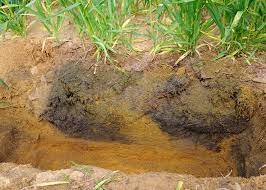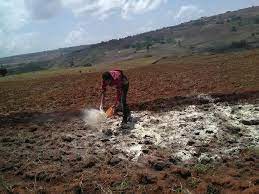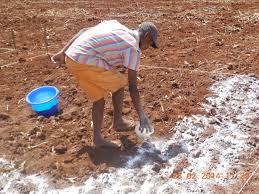The soil reaction measures the relative amount of acid or alkali in the soil. The amount of acid in the soil has implications for soil nutrients and determines the ability and type of microorganisms that thrive in the soil. Hence, the soil reaction has an indirect effect on the decomposition of organic material.
It is measured by a soil pH meter. Liming is aimed at solving the problem of soil acidity, with the application of some liming material that could be natural or synthetic. The details of soil pH and its implications in the soil will be discussed in this article.
Read Also: Health Benefits of Sidaacuta Tea
Soil Reaction and Its Role in Soil Chemistry

The degree of acidity or alkalinity is an important variable that affects all soil properties (chemical, physical, and biological). Soil acidity is the total amount of acid present in the soil. The soil reaction is expressed as the soil pH; this is the measure of the relative acidity and alkalinity of the soil.
Soil pH is defined as a measure of the hydrogen ion (H⁺) concentration of the soil. It is the negative logarithm of the H⁺ concentration. There are four ranges that are informative, namely: (1) pH < 4 indicates the presence of free acids, (2) pH < 5.5 indicates the occurrence of exchangeable Al, (3) pH of 7.8–8.2 indicates the presence of excess CaCO₃, (4) pH > 8.5 indicates the soil has high exchangeable Na (alkaline or sodic soils).
The pH scale ranges from 1–14, but the soil pH varies between 3–9; a neutral soil has a pH of 7. At pH 7, the number of H⁺ and OH⁻ ions is equal. Active acidity is that measured by the soil pH, while the reserve acidity is that left within the soil microcell; it is usually measured by titrating the soil solution with a base.
Causes of Soil Acidity in Agricultural Soils
- Leaching loss of bases like Ca, Mg, etc.
- Application of acid-forming fertilizers, e.g., urea, NH₄⁺-based fertilizers.
- Acid rain.
- Decomposition of organic matter: CO₂ is evolved; it mixes with soil water to form weak carbonic acid (H₂CO₃).
- Hydrolysis of Al: Al³⁺ + 3H₂O → Al(OH)₃ + 3H⁺.
Importance of Soil pH in Crop Production
Soil pH is useful in determining the availability of plant nutrients, e.g., P is fixed by Al and Fe oxides at low pH; at high pH, it is fixed by Ca. Therefore, P is available maximally at near-neutral pH.
Soil pH influences the availability of toxic amounts of minerals and elements that may reduce crop growth (at low pH, Fe and Mn are present in toxic amounts in soil). It influences the population and activities of beneficial microbes.
Read Also: Benefits and Uses of Utazi Leaf
Lime Requirement for Managing Soil Acidity

Soil acidity is commonly decreased by adding carbonates, oxides, or hydroxides of calcium and magnesium; these compounds are referred to as agricultural limes.
Also, wood ash is used locally to help control soil acidity. Lime requirement is the amount of liming material required to bring about a desired pH change (i.e., the amount of lime required to raise a soil from one pH to a desired pH value).
Lime requirement is determined by (1) the change in pH required, (2) the buffer capacity of the soil, (3) the chemical composition of the liming material, (4) the fineness of the liming materials.
Methods for Determining Lime Requirement in Agriculture
- Field plot techniques: Apply rates, plant, and monitor for best yield and best rate performance.
- Titration with a base (soil solution with a base).
- Incubation studies (8 weeks with different rates of lime; test for best pH).
- Use of buffers like Woodruff buffer, Adams and Evans, etc.
The degree of acidity or alkalinity is an important variable that affects all soil properties (chemical, physical, and biological).
Soil acidity is commonly decreased by adding carbonates, oxides, or hydroxides of calcium and magnesium; these compounds are referred to as agricultural limes.
Do you have any questions, suggestions, or contributions? If so, please feel free to use the comment box below to share your thoughts. We also encourage you to kindly share this information with others who might benefit from it. Since we can’t reach everyone at once, we truly appreciate your help in spreading the word. Thank you so much for your support and for sharing!

